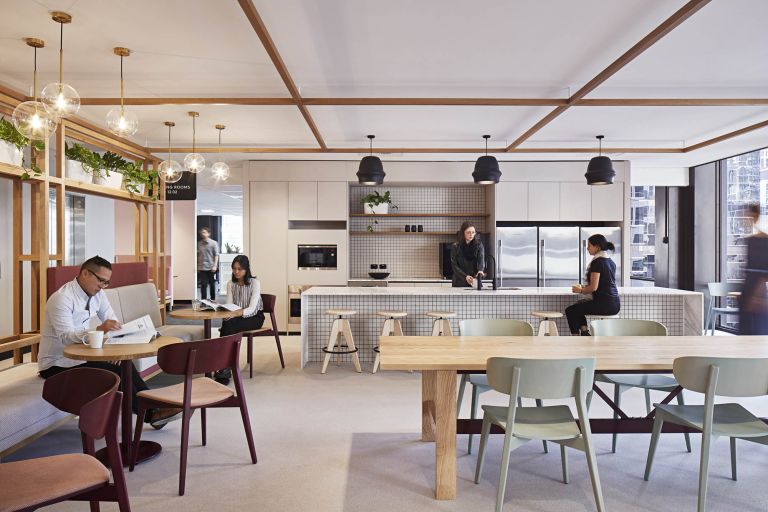
Grappling with a return to the workplace
Whilst most organisations are grappling with addressing employee safety, physical distancing and psychological comfort in order to effectively return to the workplace, there appears to be discrepancies between employee and leadership expectations.
The differing opinions about returning to the workplace comes as no surprise, as humans respond to life events, such as a pandemic, differently with varying degrees of stability and comfort. An example of varying behaviour driven by fear and uncertainty was evidenced in our supermarkets with the impending isolation orders, where members of the public resorted to emptying shelves in an attempt to stock-up on household goods. Whereas on the other hand, the vast majority behaved in an orderly manner and purchased goods as they needed them.
What is the top priority?
The research results revealed that safety is a top priority when planning for the return to the office. Leaders want their employees to feel safe and comfortable in their workplace and in the short-term are primarily concerned about:
- Managing hygiene and sanitisation to minimise contamination
- Managing physical distancing
- Managing traffic flow as employees move throughout the office
Likewise, employees are concerned about their health and wellbeing when the time comes to return to the office. Rightfully so, as COVID-19 is still a very real and immediate threat in our community.
So, how do organisations take appropriate action and make sure that the workplace is a safe environment for their people?
Organisations are driven by the need to create explicit indicators of hygiene and social distancing to make sure that employees feel comfortable. Some of our clients discussed the introduction of temperature screening, a frequent cleaning schedule, hygiene screens/barriers and sanitiser cleaning stations. From a psychological perspective, these overt cues of safety support employees’ psychological comfort as they ease their concerns and reassure them that the workplace is a safe space.

Employee's perspective
When asked about their return to the workplace strategy - organisations are at various stages of implementation. At one end of the spectrum, some organisations consider it still too soon for them to return, whereas others - particularly those in the states where COVID-19 is now less prevalent - have already begun welcoming employees back into the workplace.
In preparation for a return, employees are contemplating the move from their dining table or home study, back into the workplace. Some employees’ are requesting flexibility or the option to continue to work from home. Whilst many organisations are likely to be receptive, some employees’ requests for continued flexibility have been met with resistance from leadership.
Research shows that the most important leadership competency at this time is the ability to adapt and respond to change with resilience. When asking employees to return to the workplace, leaders be prepared for:
- Some employees will want to continue working from home for safety, personal reasons or to home school their children
- The employee feels more productive when working from home and therefore may have a strong desire to continue to work this way moving forward
In managing a return to the workplace, effective communication will be critical, particularly in instances where leaders experience resistance from employees. It will be important for a leader to take the opportunity to have a one-on-one conversation with their people to truly understand how they feel about returning to the workplace, what their concerns are and their primary reasons for wanting to continue to work from home. From this open conversation, they can hopefully navigate a way forward that suits the employee, the leader and the organisation.
Leader's perspective
Not all employees will be resistant to returning to the workplace. Leaders have said that there are a significant number of employees looking forward to being back in the office due to constant distractions at home.
The workplace will still have an important role to play for employees’ sense of community and belonging. In considering the role of the workplace in the long term, leaders believe that we all have a new appreciation for human connection and expect that the workplace will bring people together for both collaborating and socialising.
Although there will likely be an increase in the number of employees working from home in the future, compared to pre-Covid-19, many will still need face-to-face interactions in order to effectively perform their roles and maintain team dynamics. Employees will need to consider the benefits of returning to the workplace:
- Team culture, connections and morale
- Innovation and creativity
- Greater sense of belonging and sense of place within the organisation
- Greater sense of purpose and routine in day-to-day life
- Spontaneous interactions and impromptu collaboration

Open communication
Many organisations have highlighted that any return to work strategy should be implemented on a “trial” basis – much like a pilot program. This will enable organisations to easily make adjustments and respond to changing needs as we continue to learn how to work with COVID-19.
Although the workplace may not be as it once was, it does still have an important role to play in our work lives. Moving forward, employees and leaders must work together through open communication to understand each other’s perspective and identify how the workplace can be a tool that supports the effectiveness of business and people.

Let's work together
Our People and Culture Consultants, Keti Malkoski (right) and Samantha Simpson (left), are trained professionals in workspace strategy and research.
They guide organisations through the change management journey, whilst optimising staff productivity and wellbeing.
Discover further insights

The New People-centred Wellness Hubs

